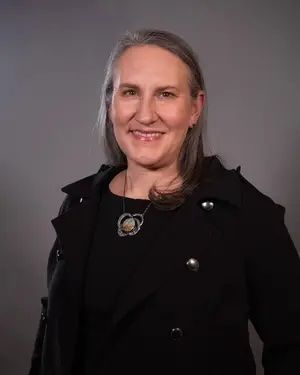News
Article
Eating Disorders in BIPOC Communities
Psychiatric Times sat down with Erikka D. Taylor, MD, MPH, DFAACAP, of Project HEAL to discuss the unique challenges associated with treatment of eating disorders in this patient population.
fizkes_AdobeStock

CLINICAL CONVERSATIONS
Members of Black, Indigenous, and People of Color (BIPOC) communities are half as likely to receive a diagnosis of or seek treatment for an eating disorder.1 Psychiatric Times® sat down with Erikka D. Taylor, MD, MPH, DFAACAP, of Project HEAL to discuss the unique challenges associated with treatment of eating disorders in BIPOC communities.
Psychiatric Times: What is the prevalence of eating disorders in BIPOC communities?
Erikka D. Taylor, MD, MPH, DFAACAP: Information regarding the prevalence of eating disorders in Black, Indigenous and People of Color is very limited for a number of reasons. There is a significant lack of representation and inclusion of BIPOC communities in research studies. Also, BIPOC communities are 50% less likely to be screened or diagnosed for an eating disorder1 and often suffer in silence, leading to worse outcomes.
One study by Cheng, et al,2 indicates that there are not any significant differences in prevalence of eating disorders or subthreshold eating disorders among ethnic groups. We still have a lot to learn about the prevalence of eating disorders in BIPOC communities, and we must prioritize recruiting more people of color into research studies.
PT: What unique challenges do BIPOC communities face in accessing mental health care for eating disorders?
Taylor: BIPOC communities face many challenges with accessing mental health care for eating disorders, and some of those challenges include systemic racism, implicit and explicit bias, lack of screening, weight discrimination, financial barriers, lack of diverse treatment providers, and stigma.
Also, the treatment for eating disorders requires a multidisciplinary approach, and it can often be very difficult to find a full team that consists of a therapist, a dietitian, a psychiatrist, and a primary care clinician. Also, given the limited research in BIPOC populations, traditional approaches to care may not be as effective and can even be harmful.
We need to ensure that we are researching more interventions that can best serve people from different cultural and ethnic backgrounds. Lastly, eating disorders can co-occur with other psychiatric conditions, and it is necessary to find treatment providers who can address eating disorders and other co-occurring conditions such as posttraumatic stress disorder.
PT: How can mental health clinicians address systemic barriers to ensure equitable care for BIPOC patients with eating disorders?
Taylor: Whether in private practice, an academic center or with a local agency, mental health clinicians can address these barriers to ensure equitable care for BIPOC patients by screening all of their patients for eating disorders, including social and community supports, in treatment planning; addressing social determinants of health such as food insecurity; recruiting BIPOC individuals in research studies; training and hiring diverse clinicians; and learning how to provide culturally sensitive and inclusive patient-centered care.
PT: How can mental health clinicians help break stereotypes associated with eating disorders?
Taylor: Mental health clinicians can help break stereotypes by acknowledging and addressing any underlying bias regarding eating disorders. I had to “unlearn” the stereotypes I associated with eating disorders based on my clinical training and social media influences. Once we can address our own implicit biases, we can have more awareness on how to break those stereotypes by understanding the full spectrum of eating disorders and how they may be manifested among BIPOC populations.
Dr Taylor is a child, adolescent, and adult psychiatrist, and board chair and executive committee chair of Project HEAL. She is also a consulting associate at Duke University School of Medicine, co-founder of Catalyst Therapeutic Services, and CMO of Arise.
References
1. Eating disorders in BIPOC communities. Equip. Accessed February 23, 2024. https://equip.health/conditions/bipoc
2. Cheng ZH, Perko VL, Fuller-Marashi L, et al. Ethnic differences in eating disorder prevalence, risk factors, and predictive effects of risk factors among young women. Eat Behav. 2019;32:23-30.
Newsletter
Receive trusted psychiatric news, expert analysis, and clinical insights — subscribe today to support your practice and your patients.




